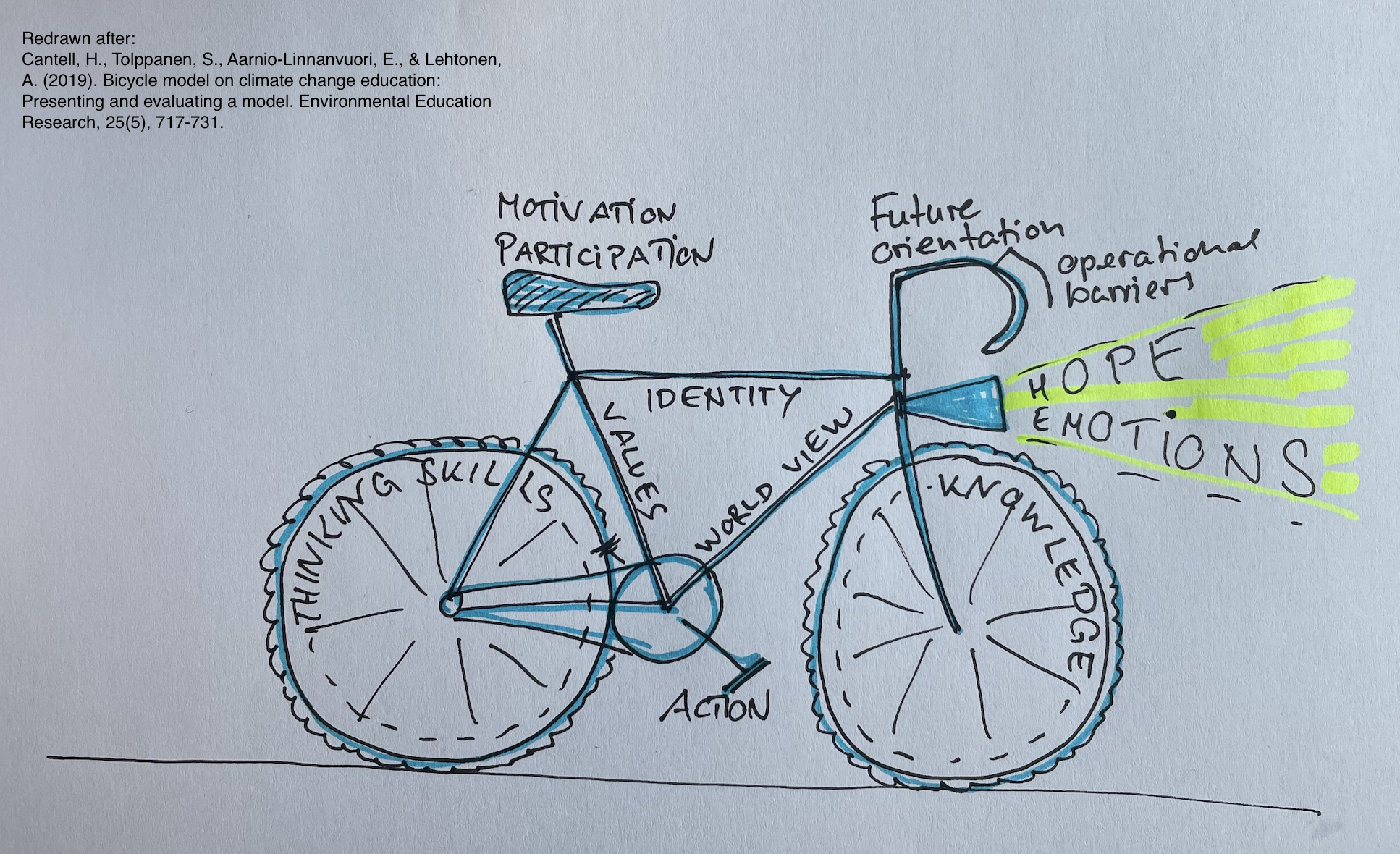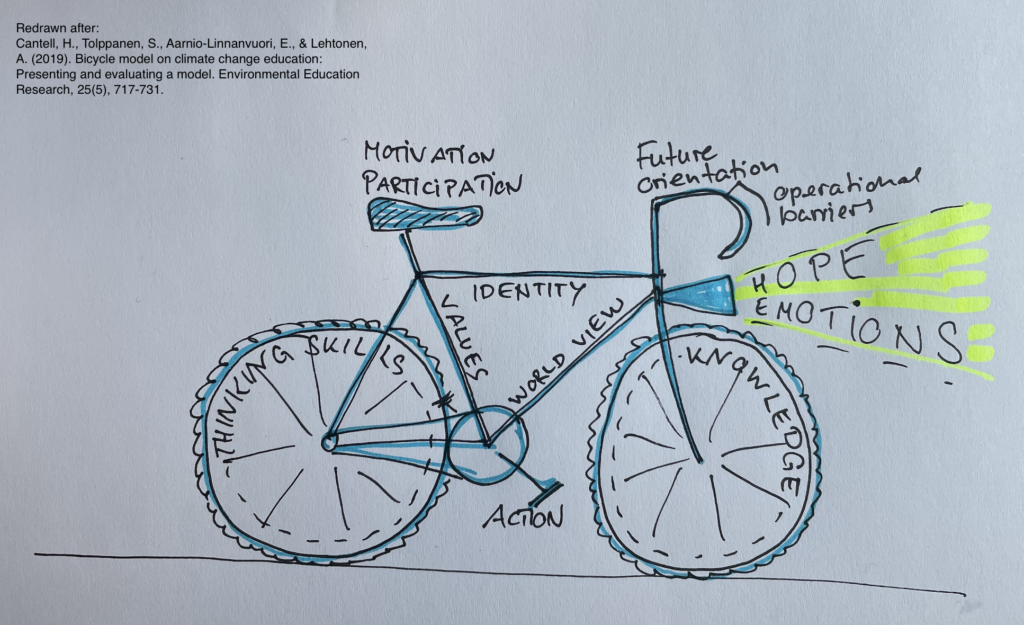
Currently reading “Bicycle model on climate change education: Presenting and evaluating a model.” by Cantell et al., 2019
Came across this model, had to share! You know I love me a good visualization of a model, and I think this one is brilliant to help support thinking about sustainability teaching in a holistic way!
Cantell et al. (2019) evaluate the “bicycle model for climate change action” (see my rendition of their figure above/below), which is based on a lot of research in climate change education (CCE) and combines all the elements that come out as important for CCE to be successful. The model uses the analogy of a bicycle with its essential components to move forward:
- Two wheels. One represents knowledge, the other thinking skills, both of which are necessary and need to play together, but are not sufficient on their own.
- A frame. All new knowledge and skills will be brought together and interpreted through the lens of the learner’s identity, values, and world view.
- Chains and pedals. This represents the “real life” action that is necessary.
- The saddle. In order for people to be willing to ride the bike of climate change action, motivation needs to be supported, and often that means doing things in a community and participating in something bigger.
- Brakes. Not all action will lead to the desired results, sometimes there are barriers to operation, and they need to be understood and dealt with (here, in my opinion, the analogy breaks down a little bit, since the breaks on a bike are actually serving a desirable purpose)
- The lamp. This signifies the importance of emotions, and especially of hope, in order to find the way.
- A handlebar. This is the future orientation, the vision of where to go and how to steer in the right direction to get there.

In their evaluation, Cantell et al. (2019) find that the model is useful in visualizing the complex nature of CCE, keeping it in mind when planning teaching, and even using it as a tool to evaluate teaching. It supports pedagogical reflection and I really like how easy it is to grasp all the important elements without a lot of explanations. Interestingly, the brakes that I criticize above, too, are also discussed critically, with some of the experts disagreeing with the authors on whether or not they should be included. But I agree with the authors that people need to be aware that there are barriers and what they are, so they can prepare adequately and don’t get frustrated by something that would have been foreseeable, and that discussion of common barriers helps understand each other and our behavior, so we can more easily cooperate.
The discussion of possible future developments of the model is also super interesting. We need collaborative action, so should we have a tandem instead? But that would take away agency from one of the cyclists, and also it would be much more difficult to move the tandem alone, even though sometimes that might be necessary. But they suggest to draw several bikes together to include that aspect, which works to make the point, but which I would then probably leave to the imagination of the reader.
Anyway, I think the model is great to start conversations about holistic approaches to CCE, and I will therefore put my drawing (which you see a photo of above — I HAVE to redraw images to make them stick to my memory!) on the wall in our coffee corner. Ha! :-)
Cantell, H., Tolppanen, S., Aarnio-Linnanvuori, E., & Lehtonen, A. (2019). Bicycle model on climate change education: Presenting and evaluating a model. Environmental Education Research, 25(5), 717-731.
My Homepage says:
… [Trackback]
[…] Informations on that Topic: mirjamglessmer.com/2023/06/30/currently-reading-bicycle-model-on-climate-change-education-presenting-and-evaluating-a-model-by-cantell-et-al-2019/ […]
Recap of the first meeting of my new course "Teaching for Sustainability" - Adventures in Oceanography and Teaching says:
[…] also quickly showed the bicycle model for climate change communication as a good alternative […]
binance account creation says:
I don’t think the title of your article matches the content lol. Just kidding, mainly because I had some doubts after reading the article.